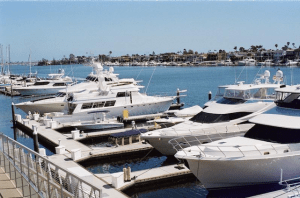How To Create An International Trust
How To Set Up a Cook Islands Trust
A Cook Islands trust is a legal tool to protect assets from creditors and lawsuits. Many legal professionals consider the Cook Islands trusts as the world's strongest legal vehicle for asset protection and financial privacy. Lawsuits pose significant threats to the assets of hard-working individuals. Therefore, people use offshore asset protection trusts, such as this one, as solid additions to wealth management plans.
With the right assistance, setting up a Cook Islands trust can be an easy process. It can also provide piece of mind that you have protected your assets in a safe jurisdiction with strong offshore trust law. If you want more information, call the number on this page or complete a free consultation form. We have very experienced attorneys and consultants on staff who can help.
How People Use Cook Islands Trusts
The main use of the Cook Islands trust is asset protection from lawsuits. Here are some common ways people use them:
- Divorce asset protection
- Protecting investments (bank account, stock market, etc.)
- Protect real estate with equity stripping arrangements
- Protect assets after a lawsuit
- Protecting assets before marriage
- Estate planning & family legacy planning
- Protect business sales proceeds
Cook Island Trust Formation Requirements
According to the Cook Islands International Trusts Act of 1984 (as amended), an international trust is a trust which meets two conditions. First, at least one trustee must be either an international company, a foreign company, or a Cook Islands licensed trustee company. In order to enjoy the maximum asset protection, the licensed trustee (our local law firm) is the best choice. Second, the beneficiaries of the trust must be non-residents of the Cook Islands at all times.

You will need the following for the registration of a trust in the Cook Islands:
- Copy of the final trust deed
- Original copy of the signed execution page of trust deed
- The licensed trustee company acting as the trustee will also need due diligence listed below
Trust Information Form
This document includes the desired name of the trust, settlor and trust beneficiaries. Optionally, it may also contain the names of protectors, if any, and successor protector. Protectors perform tasks such as instructing the trustees or changing trust jurisdictions if needed.
Deed of Indemnity
Nearly 100% of people who set up Cook Islands Trusts are either in lawsuits or anticipate them. So, trustees are immersing themselves into a client base that is more entrenched in litigation than members of the general populous. The trustee simply wants to provide honorable, reputable trustee services. They have no interest interested in someone pulling them into time consuming and expensive litigation. Thus, the Deed of Indemnity is a document that provides them with protection within such a pool of clients.
Letter of Wishes
This is an optional document that tells the trustee the desires of the settlor beyond those set forth in the trust deed. This document is not part of the trust.
Sample Letter of Wishes
The Settlor asks that the trustees consider that he wants his spouse to receive proceeds from his discretionary trust from after his death until she remarries.
One might word the request in the following manner: "Though I am aware that I cannot restrict the trustee's direction in any manner, I ask the trustees to take into account the following wish:
"I ask the trustees to consider a monthly payment of $3000 per month paid to my wife, Sally Smith, from the date of my death until she remarries. If does remarry, I ask the trust fund to distribute, in equal shares, to my niece Sarah Jones and my nephew Robert Stevens.
"The following are details of these beneficiaries:
"[Beneficiary Name, Address, Contact Information, Birthdate, How related to Settlor.]"
Sworn Affidavit of Solvency
Each settlor of a Cook Islands trust needs to sign a sworn affidavit. This is the case regardless of who is the trustee. The affidavit must swear that the settlor of a trust can meet all existing or anticipated financial obligations. They must be able to do so at the time that one transfers the specified assets that one lists on the affidavit into the trust. This is to protect the trustee from accusations of sheltering assets from legitimate creditors. Though many people use the trust for this purpose, the trustee needs to protect its reputation in the international financial industry.
Regardless of this requirement, you can still use the trust to securely protect your assets. This is the case even a judgment subsequently hits you that surpasses your available resources outside of the trust. So, in our experience, this document is mainly just a formality that is standard in the offshore asset protection industry.
Other Documents Needed
The following are other documents that the regulations require in order to establish a Cook Islands trust.
- A copy of the photograph page of your passport (or a copy of your driver's license) duly certified by a Notary Public.
- Supporting documentation or evidence as to the source of your wealth or funds you transfer into the trust. This is to comply with international money laundering regulations.
- Original documentary evidence of your address. Must be an original recent utility bill, credit card statement or bank statement; an original rather than a photocopy.
- A bank reference letter.
Why Do Trustees Need Due Diligence?
The reason trustee's need due diligence is to meet international money laundering regulations. Regulators stringently audit the trustees for compliance. Suppose a trustee is missing proof of physical address or a bank reference letter, for example. The regulator could impose a fine upon the trustee. Multiple violations by a trustee result results in loss of license, thus, their livelihood.
International regulators also conduct audits of each country. Multiple violationsby a country results in the Organization for Economic Co-operation and Development ( OECD) placing that country on a blacklist. This results in trade restrictions that can cripple the country's economy.
Plus, the OECD inspectors can audit a provider at anytime. So, needless to say, they don't make exceptions on due diligence requirements.

International LLC
In order to utilize the best asset protection possible in the Cook Islands, it is advisable to establish an international limited liability company. The trust will wholly own the LLC. So, the trust owns the LLC and the LLC holds the bank account. The benefit is that our client is the initial manager of the company. Plus, the client is the bank account signatory until such a time that the trustee needs to step in to protect assets. When legal duress arises, a judge could order a judgment debtor to hand over the funds. However, when the trustee steps in, court orders to the trustee, who also serves as LLC manager fall on deaf ears. Foreign courts do not have jurisdiction over Cook Islands trustees.
We commonly establish the LLC in the Caribbean island of Nevis or in the Cook Islands itself. Offshore LLC formation requires the following:
- The company name
- Names and contact details of managers. Managers and member (owners) do not appear in a public registry.
- Notarized photocopy of a passport
- Original utility bill bearing residential address
- Bank and/or professional reference letter(s)
Structure of a Cook Islands Trust
A Cook Islands international trust is not subject to taxation in its own jurisdiction. Though, U.S. people only pay taxes back home. So, the structure is tax-neutral. In addition, the settlor of the trust has the ability to choose whom they nominate as the trustee.
There are four different main roles which comprise the trust.
Settlor – The settlor is the person who establishes the trust.
Trustee – The trustee is the person or firm who hold the title to the assets for the benefit of the beneficiaries. The trustee also the administer the trust. So, how do make smooth transition when you are under legal duress without getting accused of transferring assets? Answer: Don't transfer assets. Transfer management. For example, let's say the trust owns an LLC that holds a bank account. Thus, a settlor may use the trustee to facilitate the transfer of management of the LLC from the settlor to the trustee. This is a common strategy one would employ during times of legal duress for the settlor.
Custodian / Protector – The trust custodian or protector is an optional position. It adds an additional layer of security. An example of when this might be useful is in the event that the trustee takes over the LLC while the settlor is under legal duress. The custodian, who is usually a person the settlor trusts like a family member, gives oversight. Custodians have the power to appoint trustees. They can also veto any actions made by a trustee on behalf of the settlor. Most people choose not to employ this position because it slows down the time needed to withdraw funds from the structure.
Beneficiary – The beneficiary of a trust is anyone who stands to receive benefit from the trust. Usually, the beneficiaries of a trust are the settlors and/or their family members.

What Can You Hold in a Cook Islands Trust?
People frequently use Cook Islands trusts to hold investment portfolios, intellectual property, bank accounts, and other types of financial assets. Those with lawsuit concerns can use them for both liquid and tangible assets. This includes holding stock or shares in a company. In addition, the trust can hold real estate. However, in certain jurisdictions such as the United States, adverse judgments can attach to local real estate. So, for real estate asset protection, we employ equity stripping strategies. We record liens against the real estate that our third-party lenders can buy. The proceeds go into an inaccessible account within the offshore trust.
It is typically best practice to transfer assets into the Cook Islands trust at the time one establishes it. There may also be subsequent transfers of assets beyond the initial settlement. It is not necessary for the assets to be physically located in the Cook Islands. One may hold assets inside of a Cook Islands trust in any financial institution in the world which provides a financial safe haven. Depending on the assets involved in the transfer, the trustee may need to be involved. The trustee may have to execute transfer documents. They may also need to complete forms in order to open bank and investment accounts.
Trust + LLC
Most often we form a trust in the Cook Islands in conjunction with a limited liability company (or corporation). One establishes bank and brokerage accounts in the name of the company. The trust, in turn, owns 100% of the LLC. The settlor is often the initial manager of the LLC.
In the case of a corporation, the settlor transfers their assets in exchange for shares in the corporation. On then places the shares into the trust. The directors manage assets held within a corporation. The trustee may also appoint an asset manager with regard to the desires of the settlor. If further assets are transferred to the trust at a later date, the settlor will receive more shares of the corporation. The shares must then be transferred into the trust.
When one uses a trustee company licensed in the Cook Islands (highly recommended), the following are required:
- The original title documents, or proof that a custodian holds the original documents
- A bank, brokerage, or custodian account in the name of the trust or trustee which shows the assets
Uses of a Cook Islands Trust
Individuals in high-risk professions including physicians, lawyers, and business owners receive immense benefit from Cook Islands trusts. Cook Islands trusts are also useful for protecting assets from political or economic uncertainty. The trusts here do not have a rule against perpetuity, as do most jurisdictions, which strictly limit the possible lifespan of trusts. As a result, they make ideal legal vehicles for those looking to plan their estate across multiple generations. Additionally, Cook Islands trusts can be used can be used to protect retirement savings accounts.

Cook Islands Trust for Asset Protection
As discussed above, one of the best ways to use a Cook Islands trust for asset protection is by opening a wholly-owned LLC. Owned in its entirety by the trust, the LLC can be based in the Cook Islands or the Caribbean island of Nevis. You then open the bank account in the name of the LLC. The settlor of the trust is named as the manager of the LLC. They are able to control all of the assets held within the LLC's accounts. The settlor is also the first signatory on all the accounts. The assets can be held in the location of the LLC or in any financial institution around the globe which provides a financial safe haven.
In times of legal duress, the settlor of the trust may ask the trustee assume the position of manager for the LLC. Provided that it is stipulated in the trust deed and by statute, the trustee is legally obligated to disregard foreign judgments. The trustee may pay bills or carry out other financial obligations for the settlor. The trustee cannot comply with a foreign judgment, even if instructed to do so by the settlor when they are under legal duress. The strategy of using a Cook Islands trust combined with a Cook Islands or Nevis LLC is the most ironclad way to protect financial assets.

Cook Islands or Nevis?
Both the Cook Islands and Nevis have similar advantages for asset protection and financial privacy through offshore company formation. This is particularly true when using the LLC in combination with a Cook Islands trust. Some settlors prefer to open an LLC in Nevis because it is in the same time zone as parts of the United States. Others feel that the Cook Islands are more secure from creditors due to their remote location. As of this writing, Nevis LLC asset protection statutes slightly surpass that of the Cook Islands. Either way, the combination of a Cook Islands trust with an LLC in the Cook Islands or Nevis will provide world-class asset protection. In addition, Belize is a very popular offshore asset protection trust jurisdiction.

Cook Islands Trust Background
Trust law originates from medieval England. Under the concept of dual ownership, legal title to a property was vested in one person, a trustee. The beneficial ownership of the property was vested in another person, the beneficiary. Trusts are commonly availed for the purpose of helping those with sizable assets or increased liability protect what they have worked for. The Cook Islands have had modern asset protection trust laws on their books longer than any other jurisdiction. As a result of their unique features, they remain the premiere choice for asset protection trusts around the globe.
Last Updated on August 26, 2021
How To Create An International Trust
Source: https://offshorecorporation.com/trust/how-to-cook-islands-trust/
Posted by: greentheopect.blogspot.com



0 Response to "How To Create An International Trust"
Post a Comment